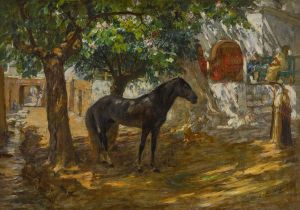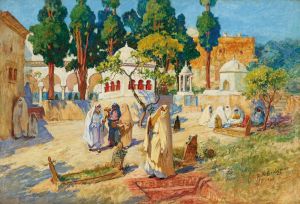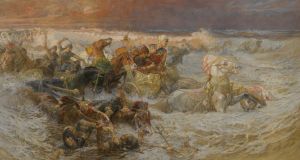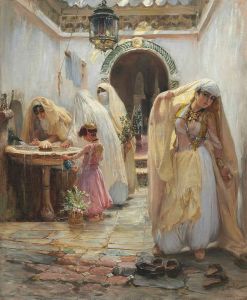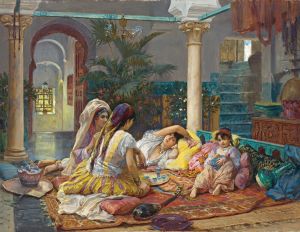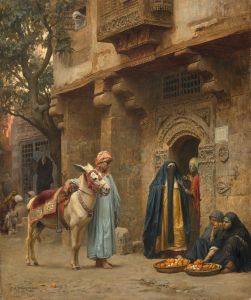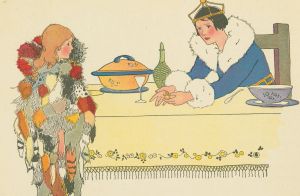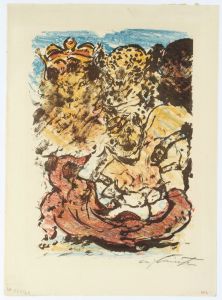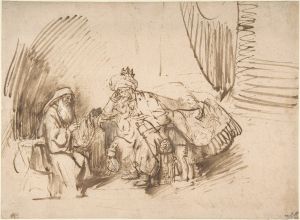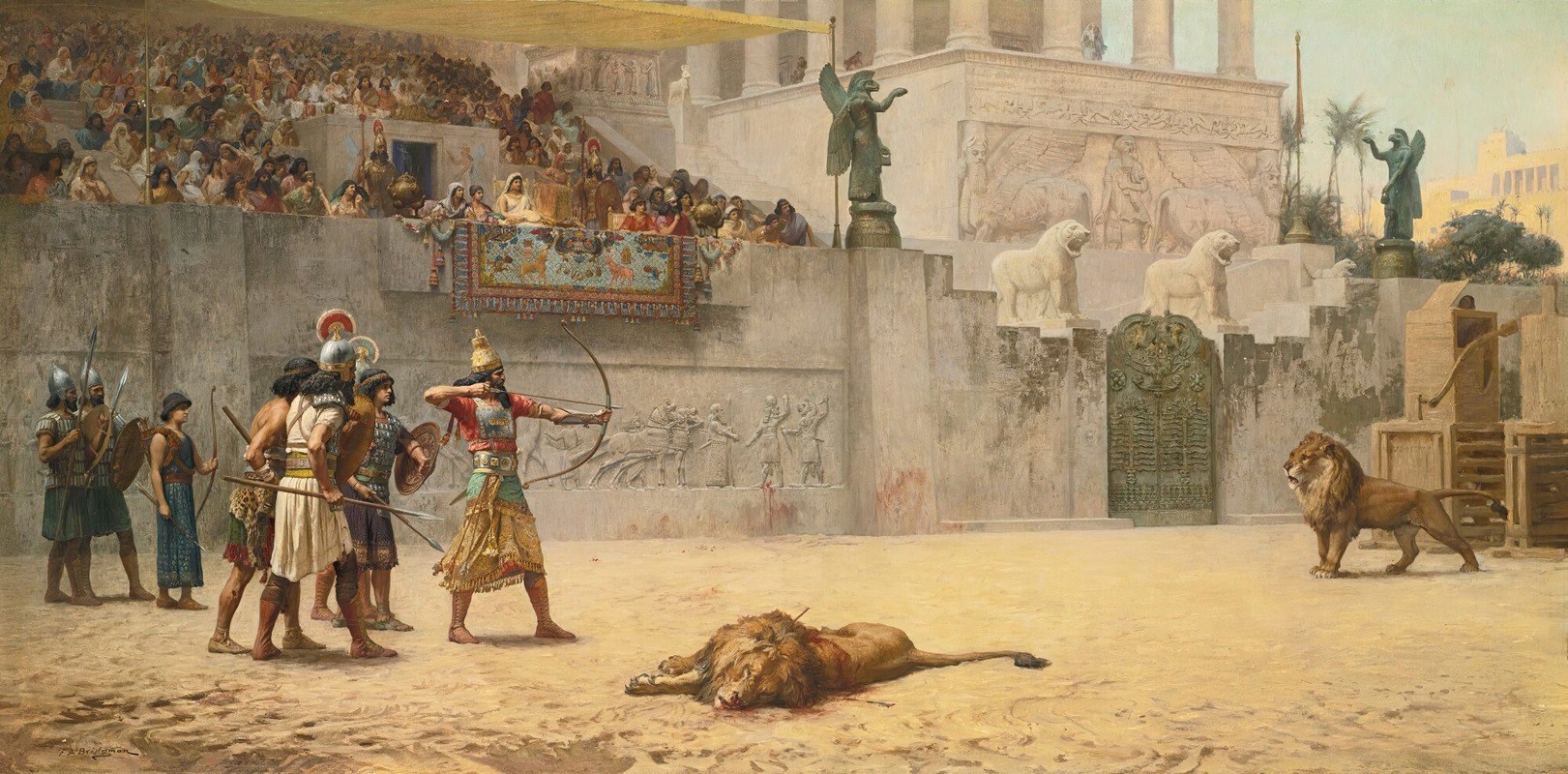
The Diversion Of An Assyrian King
A hand-painted replica of Frederick Arthur Bridgman’s masterpiece The Diversion Of An Assyrian King, meticulously crafted by professional artists to capture the true essence of the original. Each piece is created with museum-quality canvas and rare mineral pigments, carefully painted by experienced artists with delicate brushstrokes and rich, layered colors to perfectly recreate the texture of the original artwork. Unlike machine-printed reproductions, this hand-painted version brings the painting to life, infused with the artist’s emotions and skill in every stroke. Whether for personal collection or home decoration, it instantly elevates the artistic atmosphere of any space.
Frederick Arthur Bridgman was an American artist known for his Orientalist paintings, which often depicted scenes from the Middle East and North Africa. One of his notable works is "The Diversion of an Assyrian King." This painting exemplifies Bridgman's fascination with ancient cultures and his ability to bring historical scenes to life with vivid detail and rich color.
"The Diversion of an Assyrian King" portrays a scene set in ancient Assyria, a powerful Mesopotamian kingdom known for its military prowess and cultural achievements. The painting captures a moment of leisure and entertainment, likely intended to reflect the opulence and grandeur of the Assyrian court. Bridgman's attention to detail is evident in the intricate costumes and architecture, which are characteristic of his style and contribute to the historical authenticity of the scene.
Bridgman was part of a broader movement of Orientalism in 19th-century art, where Western artists depicted scenes from the East, often romanticizing or exoticizing the cultures they portrayed. His works were informed by his travels to the Middle East and North Africa, where he gathered inspiration and material for his paintings. Bridgman was known for his meticulous research and commitment to accurately representing the historical and cultural contexts of his subjects.
In "The Diversion of an Assyrian King," Bridgman likely drew upon historical texts and archaeological findings available during his time to create a scene that would resonate with contemporary audiences' fascination with the ancient world. The painting might depict a royal gathering or a ceremonial event, showcasing musicians, dancers, or other forms of entertainment that would have been part of courtly life in ancient Assyria.
Bridgman's work was well-received in his time, and he exhibited widely in Europe and the United States. His paintings were appreciated for their technical skill and the way they transported viewers to distant times and places. "The Diversion of an Assyrian King" is a testament to Bridgman's ability to blend historical interest with artistic imagination, creating a work that is both educational and visually captivating.
While specific details about the painting's current location or provenance might not be readily available, Bridgman's works are held in various public and private collections, reflecting his enduring legacy as a prominent figure in the Orientalist art movement. His paintings continue to be studied and appreciated for their contribution to the understanding of 19th-century Western perceptions of the East and the artistic techniques employed to convey these visions.
Overall, "The Diversion of an Assyrian King" is a significant example of Frederick Arthur Bridgman's oeuvre, illustrating his skill in capturing the essence of ancient cultures through the lens of 19th-century Orientalism.





![Ruins of Karnack [Karnak].](/imgs/217533/s/david-roberts-ruins-of-karnack-karnak-f5b9f9ff.jpg)
![Temple of Dandour [Dendûr], Nubia.](/imgs/217545/s/david-roberts-temple-of-dandour-dendur-nubia-8921547f.jpg)
